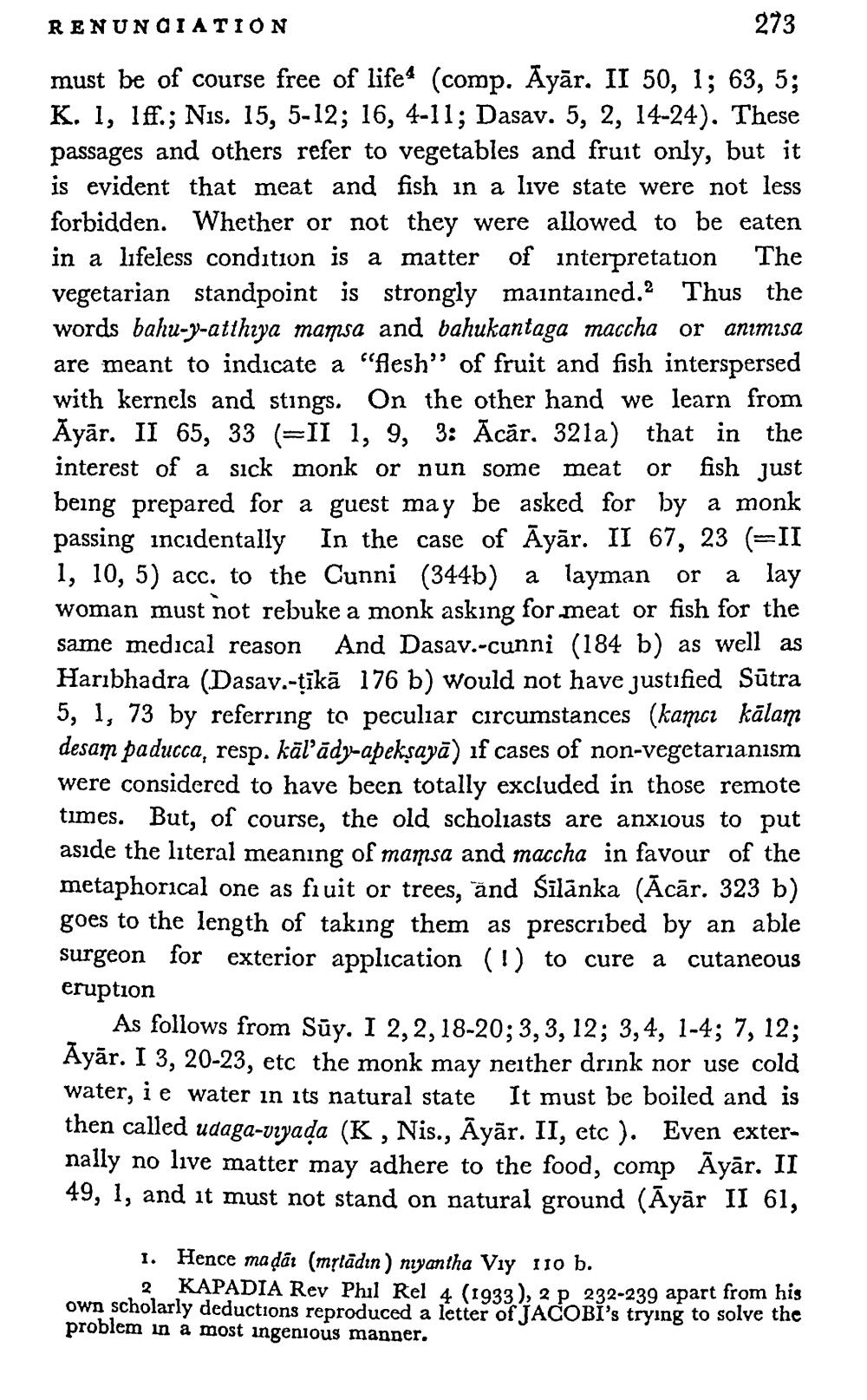________________
273
RENUNCIATION must be of course free of life(comp. Āyār. II 50, 1; 63, 5; K. 1, iff.; Nis. 15, 5-12; 16, 4-11; Dasav. 5, 2, 14-24). These passages and others refer to vegetables and fruit only, but it is evident that meat and fish in a live state were not less forbidden. Whether or not they were allowed to be eaten in a lifeless condition is a matter of interpretation The vegetarian standpoint is strongly maintained. Thus the words bahu-y-atthiya mamsa and bahukantaga maccha or animisa are meant to indicate a "flesh" of fruit and fish interspersed with kernels and stings. On the other hand we learn from Āyār. II 65, 33 (=II 1, 9, 3: Ācār. 321a) that in the interest of a sick monk or nun some meat or fish just being prepared for a guest may be asked for by a monk passing incidentally In the case of Āyār. II 67, 23 (=II 1, 10, 5) acc. to the Cunni (344b) a layman or a lay woman must not rebuke a monk asking for meat or fish for the same medical reason And Dasav.-cunni (184 b) as well as Haribhadra (Dasav.-tikā 176 b) would not have justified Sūtra 5, 1, 73 by referring to peculiar circumstances (kamcı kālam desam paducca, resp. kāľādy-apeksayā) if cases of non-vegetarianism were considered to have been totally excluded in those remote times. But, of course, the old scholiasts are anxious to put aside the literal meaning of mamsa and maccha in favour of the metaphorical one as fruit or trees, and Silānka (Ācār. 323 b) goes to the length of taking them as prescribed by an able surgeon for exterior application (!) to cure a cutaneous eruption
As follows from Sūy. I 2, 2,18-20;3,3,12; 3,4, 1-4; 7, 12; Ayār. I 3, 20-23, etc the monk may neither drink nor use cold water, i e water in its natural state It must be boiled and is then called udaga-viyada (K , Nis., Āyār. II, etc ). Even externally no live matter may adhere to the food, compĀyār. II 49, 1, and it must not stand on natural ground (Āyār II 61,
1. Hence maďár (mļlādın ) niyantha Vay 110 b.
2 KAPADIA Rey Phil Rel 4 (1923), 2 p 232-239 apart from his own scholarly deductions reproduced a letter of JACOBI's trying to solve the problem in a most ingenious manner.




